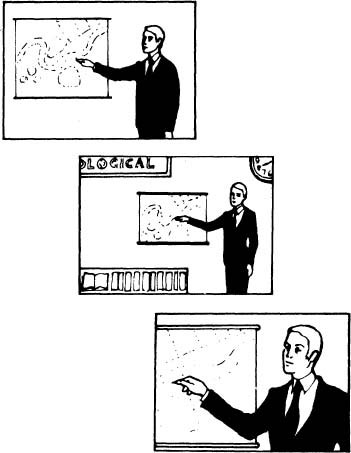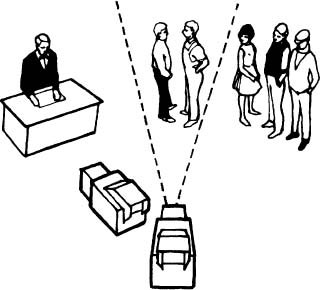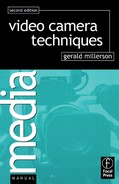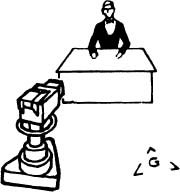The trick is not only to get succesful shots during rehearsal, but to repeat them during taping or when the show is on-air, despite the tensions and complications of working under pressure.
When people are immobile – sitting behind a desk for example – it is easy enough to repeat the same shot. But in a dynamic situation where they are moving around, with groups forming and reforming, accurate composition under these changing conditions can be quite critical.
There are a number of techniques you can use to ensure that you get the same shot each time:
• Check your lens angle – Because your zoom lens is variable, you need to make sure that it corresponds with the angle (or focal length) you used during rehearsal. (Perhaps noting it on your camera card.)
• Check ‘landmarks’ – Look at each shot carefully, to see where the frame ‘cuts’ objects in the background. These clues help you to remember the original composition.
• Check surrounding space – What is nearly coming into shot? There may be a bright window to avoid. Are you almost shooting off the set (over-shooting)? By anticipating shot limits, you will not be caught out.
• Check the dolly’s floor position – A quickly made floor mark can show exactly where the camera was positioned in rehearsal. But only make marks that you can remove easily after the show (lumber crayon, chalk, adhesive marker tape). Do avoid very conspicuous or excessive marks. (Performers also need footmarks.) They can be confusing, and may be visible if that part of the floor appears in shot.
You can often use parts of the setting or the furniture to help you locate a camera position accurately: e.g. ‘Just at the end of the wall, or beside the bookcase’.
Some people rely solely on their ‘photographic memory’ and spurn any aids. They are the ones who seem to encounter unexpected lens-flares, get those camera shadows that weren’t there last time, and finish up with different composition. Their guesses are less accurate than they believe!
You can easily find yourself working at a different distance from the subject than in rehearsal, then having to use a different lens angle in order to try and compensate. The shot’s proportions will be different!
Dolly over to a position that is ‘roughly where you were last time’, and you are likely to find that background features now look noticeably different behind the subject. A tree is now growing out of the singer’s head, that was not there before! That is why so many experienced camera operators insist on lining their shots up methodically.
Floor marks
Mark your basic floor positions carefully, always using the same part of the dolly as a guide. In a multi-position show, lettered marks can relate to your camera card. Avoid using too few or too may marks. This may only confuse you.

Shot coverage
Check your lens angle. Look around to check what is just in shot and what remains just outside the frame. By doing this you can repeat the rehearsed shots exactly during ‘transmission’.
If the shot omits items that were originally included, or now shows extra items, its impact changes.

Nearby subjects
Keep an eye on what is happening in vicinity. People may move into shot accidentally. You may find that just a slight camera movement brings unwanted things into shot.

